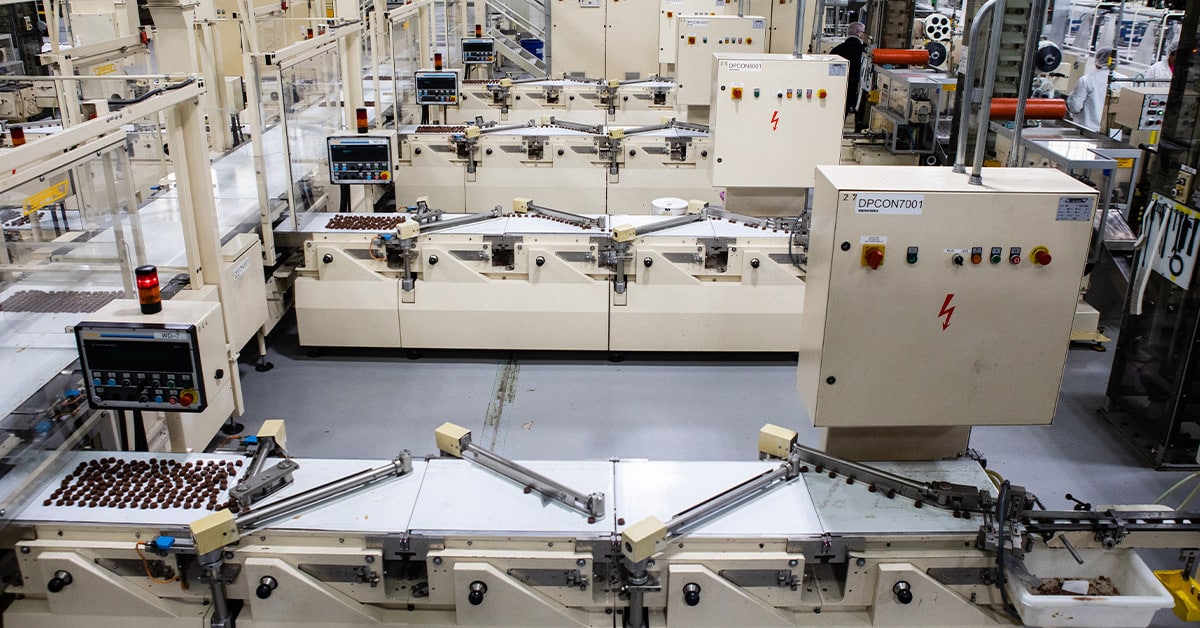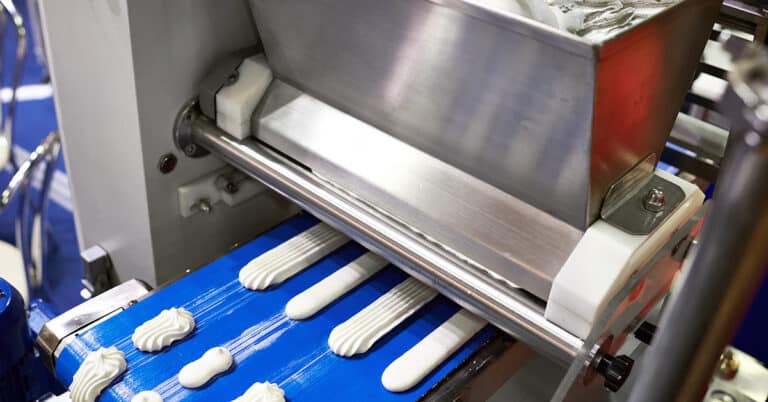Uptime is a key performance indicator in manufacturing. High levels of machine uptime indicate high productivity and efficiency. Uptime is sometimes confused with availability, which can reduce visibility into manufacturing effectiveness. Just because a machine or line is available, it doesn’t mean that it’s running or “up.”
This blog was written to help manufacturers identify opportunities to improve machinery uptime. After defining the term and distinguishing it from availability, it reviews ways of bringing about improvement and the major benefits to expect.
What is machine uptime?
A machine is “up” if it’s running and producing product. Uptime therefore is the hours for which a machine runs. This is the opposite of downtime, which is time when a machine is not running.
Machine availability is a very similar concept, but it relates to hours for which a machine could have run, if it had work to do. In other words, it subtracts time for official breaks, team meetings, planned maintenance and similar activities from the total number of hours in the period under review. Availability forms part of the OEE calculation used to measure how well assets are being utilized.
How to calculate machine uptime
Uptime can be expressed as a percentage of the total time in a period for which a machine is running. The formula is:
Uptime (%) = ([Time machine was producing)/(Total time in the period)] x 100
As an example, if a machine ran for 20 hours during a 40-hour work week, uptime in that week would be 50%.
A formula for availability is:
Availability (%) = [(Uptime/(Planned Production Time)] x 100
(Note that “uptime” is synonymous with “run time” or “machine running time,” which some people prefer to use.)
An example may help clarify the difference. Picture a machine in a factory expected to operate 40 hours per week. Due to planned breaks, planned maintenance and team meetings, five hours are not available, so the machine actually runs 35 hours per week. Then a breakdown takes out another 3 hours.
Uptime is now 32 hours, (35-3), or as a percentage 80%.
Availability however is higher. The point here is that the five hours of planned activities are subtracted from the Planned Production Time. Thus, Availability is 32/(40-5) x 100 = 86%.
Factors that influence machine uptime
Uptime is determined by machine reliability, in turn driven by how well it’s looked after, and how well it’s used. Accordingly, factors influencing equipment uptime can be grouped under the following headings:
- Preventive and predictive maintenance
- Operator training and efficiency
- Lifecycle of machinery and parts
Optimizing uptime with maintenance should focus on preventing rather than resolving machine breakdowns. This industrial preventive maintenance includes inspections and routine servicing tasks such as replacing filters and adjusting belts. Taking a little time from production to do this at a convenient time helps prevent unplanned downtime.
Machine operators should be trained in the Standard Operating Procedures (SOPs) for the equipment they use. This ensures it isn’t overloaded or abused in ways that could cause immediate failure and/or lasting damage.
Training extends to tasks such as material handling and feeding and changeovers. Maximizing uptime requires these are done as efficiently as possible and without undue delay.
For most machines, reliability and maintenance needs are driven by the amount of work a machine has done (often measured either in pieces or operating hours). Effective maintenance will extend machine life, but in most cases components need replacing as the equipment ages. Achieving high equipment uptime requires an understanding of the life that can be expected from key components, plus a purchasing strategy that ensures they are available when needed.
How to improve machine uptime
Uptime is increased by tackling those events and activities that reduce the time for which the machine can run. That means looking at:
- Predictive maintenance and condition monitoring
- Machinery and parts quality
- Spare parts management
- Utilizing a CMMS
Predictive maintenance involves anticipating when a machine is about to break down, and doing maintenance work just before that happens. This is done by monitoring key performance parameters and characteristics and detecting trends and changes that signify deterioration.
Parameters that can be sensed for this “condition monitoring” include:
- Vibration
- Temperature
- Current
- Noise
- Pressure
- Flow
Instrumenting a machine and recording and analyzing the data acquired is called “machine health monitoring.” Historically, the analysis and failure prediction was done manually, but AI systems are increasingly taking on more of this work.
When purchasing machinery and the replacement parts it will need, seeking out higher quality helps achieve uptime goals. Machines designed with more care — built with greater precision and using more reliable components — will last longer and need less maintenance work.
Being able to obtain replacement parts quickly is key to minimizing downtime, but not every spare needs holding on the shelves. When parts are available immediately (typically through local distributors), it may not be necessary to keep any in inventory. Conversely, avoid the risk of prolonged delays with long lead times, as well as premium shipping costs by keeping some parts, especially custom items, on hand. A Computerized Maintenance Management System (CMMS) will help with optimizing the spares inventory.
Where a business is not using a CMMS, implementing one will quickly have an impact on uptime. The benefits of a CMMS manufacturers see are:
- Higher efficiency in the maintenance function
- More effective planned maintenance
- Improved record management
- Better MRO management
Benefits of maximizing uptime
Maintenance has a vital role to play in raising uptime and machine availability. Effective preventive maintenance reduces unplanned downtime while a predictive maintenance strategy helps make more time available for running.
Benefits are seen throughout the business, but most notably, include:
- Lower operating costs
- Improved OEE and productivity
- Reduced unscheduled downtime
- Longer equipment life
- Better quality and consistency
When uptime is higher, less time is being spent on activities not directly related to producing goods for sale. That translates to lower costs per unit and potentially lower costs overall.
Increasing availability raises OEE, showing that asset utilization has increased. Productivity is higher too, thanks to less downtime and especially less unscheduled downtime.
Unscheduled downtime is extremely disruptive and wasteful. Besides the direct costs of having people with nothing to do, it impacts delivery schedules, customer satisfaction and employee morale. By focusing on actions to increase uptime, maintenance reduces the occurrence of breakdowns.
Support for machine uptime initiatives
Uptime and availability are important metrics that inform management of the equipment capacity available for productive work. While the terms are often used interchangeably, they convey slightly different information. Uptime specifically relates to the time for which equipment is producing, while availability subtracts time that could be used for production but is assigned to other activities like team meetings.
The direct result of raising uptime is to increase machine capacity. This in turn benefits productivity and efficiency, operating costs and even asset life. Preventive maintenance is an important tool for increasing uptime, but once effective systems are operating, the next step is to adopt predictive maintenance technologies.
As the leading provider of maintenance services, ATS has the expertise and resources to help manufacturers optimize asset care activities. This can range from short term help with machine maintenance problems to support with implementing preventive and predictive maintenance strategies. Contact us for more information.






